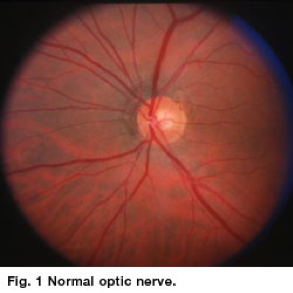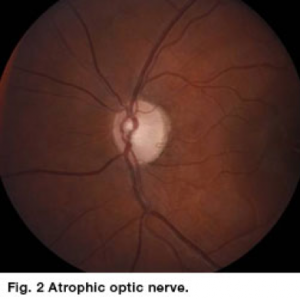What is the optic nerve?
The optic nerve is in the center of the retina and is a circular to oval pinkish area measuring 1.5 to 2 mm in diameter. From the center of the nerve radiate the major blood vessels of the retina. The optic nerve itself carries over one million nerves that connect the retina ((the layer of the eye that carries the vision cells) with the occipital lobe (the part of the brain that interprets vision) like a cable wire.
What is optic nerve atrophy?
Optic nerve atrophy (ONA) is mild to severe damage to the optic nerve that can adversely affect central vision, peripheral vision and color vision. ONA that occurs as a child may result in nystagmus (rhythmic involuntary eye movements).
What causes optic nerve atrophy?
ONA causes include: tumor, trauma, decreased blood supply (ischemia) or oxygen supply (hypoxia) causing swelling, heredity, hydrocephalus, toxins, infection, and rare degenerative disorders. Onset can be from birth through adulthood.
How is optic nerve atrophy diagnosed?

Paleness (pallor) of the typically pinkish optic nerve is observed by the eye M.D. during dilated examination with an ophthalmoscope. Testing usually includes assessment of visual acuity, pupils and examiner observation of alignment, head position and nystagmus. In older patients, peripheral vision and color vision assessment MRI scan, electroretinography (ERG), visual evoked potential (VEP) and optical coherence tomography (OCT). may be performed.
What treatment is available for optic nerve atrophy?
There is no treatment to reverse atrophy of the optic nerve; however, limiting further optic nerve damage (if possible) is the goal. For example, reduction of increased fluid pressure around the brain and spinal cord (hydrocephalus) may prevent further optic nerve damage. Spectacles may be prescribed to correct refractive error. When optic atrophy is unilateral protection of the good eye is essential and wearing of protective lenses should be stressed. Magnifiers or tinted lenses may also improve visual function.
What else can be done for a child with optic nerve atrophy?

A child with ONA may have significantly reduced vision and thus need special assistance for school. A personalized learning plan via cooperation between educational specialists, schoolteachers, and low vision specialists (sometimes with optical devices) facilitates a maximal learning experience.
Credits: Journal of American Association for Pediatric Ophthalmology and Strabismus